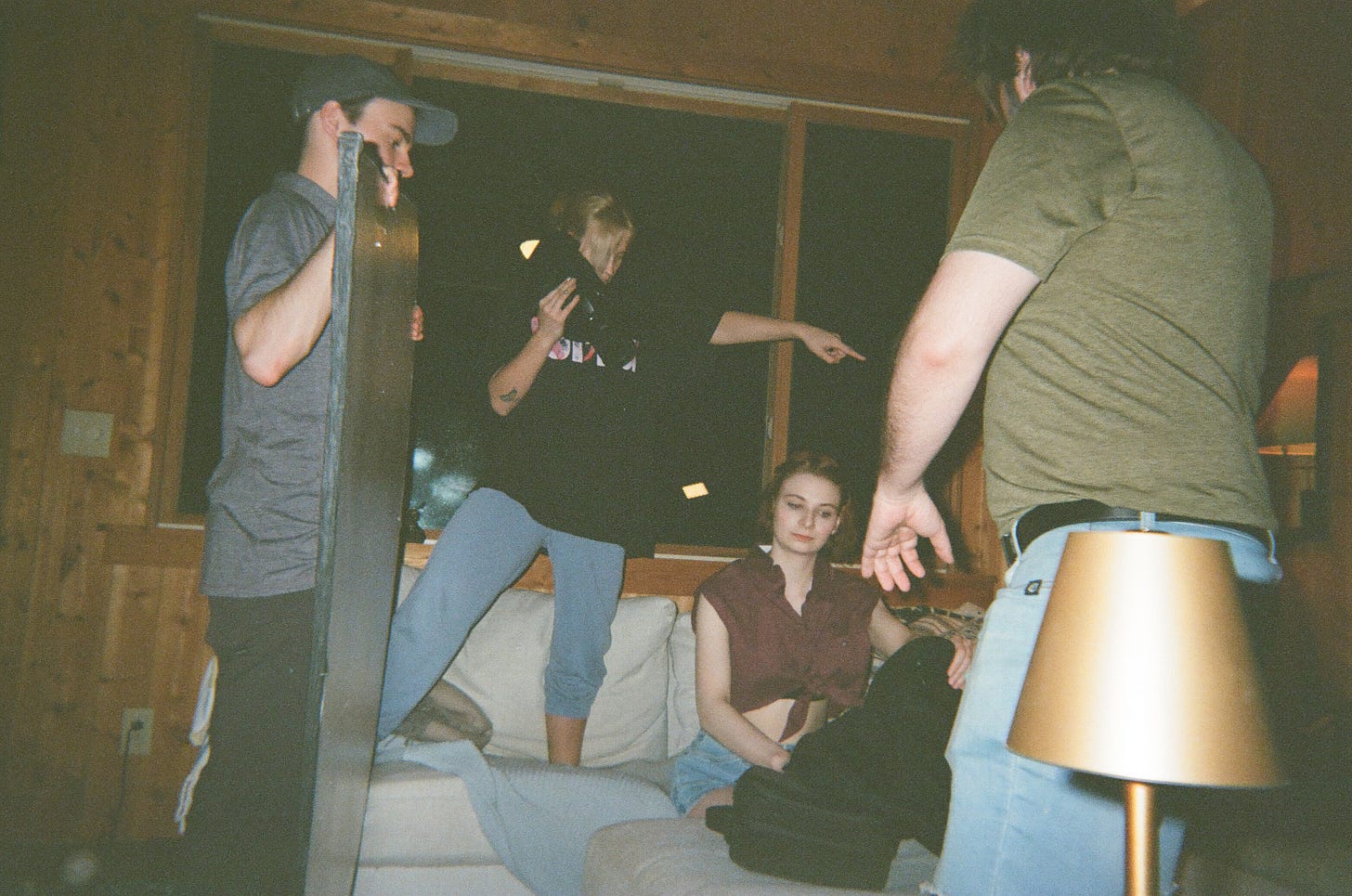Hello friends and family of the Final Girl team!
I wanted to pull back the curtain and share a little about this wild, blood-splattered, laugh-filled ride I’ve been on—bringing my and Leorah’s slasher comedy web series to life. Now that we’ve officially shot ⅓ of the project and I’ve had about a week to watch back the footage and start the editing process, it feels like a good time to reflect on the journey of bringing the pages to life.
At first, it was just us and the page. Writing these ridiculous, gory, over-the-top characters was a blast—but also weirdly emotional. Between the jokes and jump scares, I found something deeper in the absurdity: characters who genuinely care, themes of identity and belonging, and the idea that horror doesn’t always have to be serious to be meaningful.
Then came the leap—from writer to director. Terrifying? Yes. Thrilling? Absolutely! In the past, I had trouble trusting my own vision as a director as I felt a need to focus on the writing portion of it all. I spoke more about this in my recent interview with Pardon My Success!
Directing meant stepping out of my cozy writing cave and into the chaos of lights, cameras, fake blood, and collaborative magic. Suddenly, the world I had created in my head was being built in front of me, and I got to guide the tone, shape the performances, and literally yell “Action!” (It never gets old.)
However, somewhere down the line directing became an extension of writing. Every camera move, every joke delivery, every bloody stunt — it was all just another way of storytelling. Another way to pull the audience closer to these characters and their world. My brain loves to kick it into high gear and go at my projects at 110% capacity so I’ve tried to simplify the process by writing some bullet points below:
1. Writing with Direction in Mind
Once we were able to officially greenlight the flashbacks shoot, I went back into the scripts with a new lens. I started thinking visually: Where could I build tension with silence? What scenes needed long takes, and what needed quick cuts? I rewrote certain moments with blocking, tone, and pacing in mind — not just dialogue. That shift in perspective made the script sharper and more intentional.
2. Building a Mood Board and Visual Language
I put together a visual reference deck — pulling from horror classics, indie comedies, TikToks, A24 films, music videos, and even commercials. I knew I wanted to play with contrast: beautiful golden-hour shots clashing with moments of absurd, over-the-top violence. This helped align my vision and gave the crew a shared visual vocabulary from the start. I personally love using shotdeck to create all my visionary references!
3. Collaborating with Key Crew Early
For the Tennessee unit, I was blessed to be able to hire my good friends I grew up making projects with and have been collaborating with for the past 5 years(hell, 10 years when you consider Jackson Goodman who was actually one of the first people to introduce filmmaking to me). I wish I could say I started assembling my team like a tiny, blood-soaked production family, but what actually happened was they were all close friends who I had already happened to be discussing the project with casually before I was able to get it greenlit. My DP and fellow co-director James Hallock was one of my first calls — we talked about lighting, lenses, and how to balance comedy with suspense.
4. Storyboarding and Shot Listing
I wrote the Tennessee unit with the shots basically already in my mind. This helped me stay confident on set and communicate clearly, even when we were running out of daylight or working under pressure. The key to this shoot was the prepped alternate shots in case certain setups fell through — which they always do on indie sets. And we definitely went with instead for the two busier days of shooting.
5. Castings and Tone-Setting
Because Final Girl is such a blend of genres — horror, comedy, slice of life in the present day timeline— I talked to our actors about the characters and really focused on tone during the casting process and we also asked them to improvise some takes in their self tapes to make sure they understood the assignment. We talked about character arcs, emotional beats, and how to ground even the most ridiculous moments in truth. I wanted the actors to feel like they were in the same story — even if one of them was screaming and another was cracking a joke.
6. Shooting with Flexibility (and Humor)
On set, I directed with a mix of preparation and adaptability. I tried to keep the energy loose but focused — balancing the logistics of stunts and effects with the rhythm of comedy. I also gave myself permission to laugh, to problem-solve in real time, and to be honest when something wasn’t working. That vulnerability actually helped the cast and crew trust me more.
It’s been messy, hilarious, exhausting, and heart-burstingly fulfilling. And I’ve learned that directing, like horror-comedy itself, is all about balancing tones: fear with fun, structure with spontaneity, vision with collaboration.
So thank you—for cheering this project on, for supporting indie creators, and for letting a writer-turned-director chase something a little scary and a lot joyful.
Stay tuned for blood, laughs, and maybe a few heartfelt surprises.
With (bloody) love,
Caroline <3









I can feel the energy as you summarize a week’s work!
What a great glimpse into the process from concept to reality!